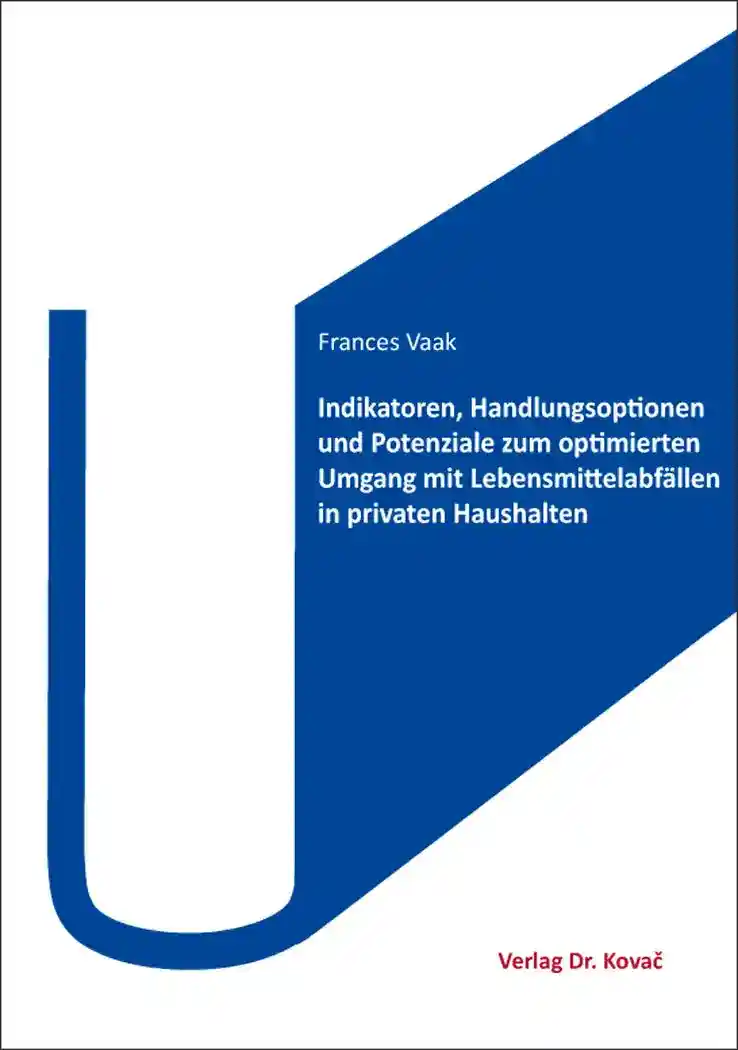Frances VaakIndikatoren, Handlungsoptionen und Potenziale zum optimierten Umgang mit Lebensmittelabfällen in privaten Haushalten
Studien zum Konsumentenverhalten, volume 72
Hamburg 2016, 190 pages
ISBN 978-3-8300-9285-8 (print)
ISBN 978-3-339-09285-4 (eBook)
Rezension
[…] This in-depth case study provides important insights for policy makers.
About this book deutschenglish
The oversupply of food in many industrialized countries leads to disposal of food commodities that have not even been consumed, which logically contributes to generation of avoidable food waste.
The purpose of the present study is to examine the amount of food waste from private households disposed in the residual waste collection both in the town and the district of Gießen. In order to compare the different findings, households were classified into different categories based on specific features such as residential housing types, location and sociodemographic indicators (namely age patterns and social status). Over the course of the study, a consumer survey was conducted with the objective to identify causes for food wastage.
The results of residual waste sorting analyses show that households dispose about 30 % (by weight) of the organic material, which mainly consists of pre-consumer kitchen waste and post-consumer leftovers, in the bin of residual waste, despite the availability of organic waste collection bins. About 22.6 kg of avoidable food waste are disposed per person per year as residual waste, whose monetary value reaches about 119 Euro. Moreover, about 50 % (by weight) of the avoidable food waste consists of fruits, vegetables and bakery goods. With regard to sociodemographic factors of the examined sample, it becomes apparent that in rural areas 50% less avoidable food is disposed as residual waste than in urban ones (28.8 kg per person per year). At the same time, it must be pointed out that the amount of food waste disposed as residual waste from single-family households (16.3 kg per person per year) is lower than the one disposed in multi-family households (29.9 kg per person per year). With regard to age patterns, no significant differences in the amount of generated waste are detected. As far as the amount of food waste generation in multi-family households according to social structures is concerned, it appears that households from deprived areas (67.7 kg per person per year) generate the largest amount of food waste.
The results of the residual waste sorting analyses indicate that the cause for disposal of 8.2% of the total amount of food products can be attributed to the expiration of the best before date. On the other hand, the results of the consumer survey corroborate that the greatest part of the sampled population is well informed about the meaning of both the best before and the use by date. Hence, this possible cause for food disposal doesn’t seem to be relevant.
From the observations of opened food items, it seems remarkable that these products consist of almost half-full packages with 44% (by weight) leftovers. Hence, it can be assumed that minimising packaging size might contribute to reduce the amount of wasted food.
The outcomes of the present study provide first detailed results about the amount of food waste generation from residual waste collection streams. Furthermore, some avoidance strategies are discussed and evaluated. In order to successfully reduce and combat food wastage by consumers, the implementation of more targeted approaches is needed.
